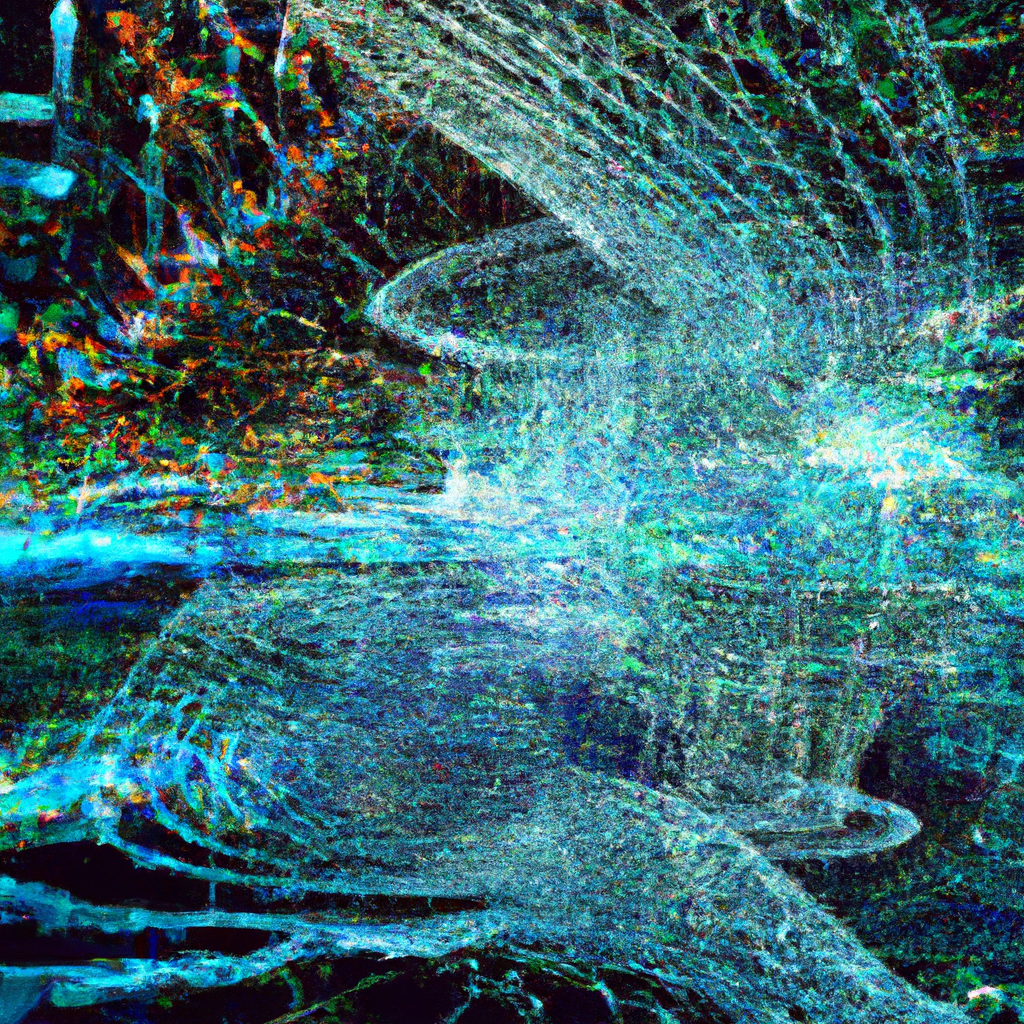
In this article, you’ll discover the latest advancements in 3D AI technology. First, Microsoft Teams Avatars allow users to switch their face to an avatar during team meetings. Then, Uncle Bunny, a holographic frame powered by GPT, features a conversational rabbit. Spline AI is a text-to-3D object tool that enables users to create and modify 3D objects with AI textures and physics. The tool is currently in alpha and free to use, with AI textures included in the super teams plan. Opus.ai, a 3D Metaverse Generator, turns text into worlds, allowing users to create landscapes and scenes based on text prompts. Moreover, Futuretools.io curates cool tools related to AI, AR, virtual reality, and 3D gadgetry and offers a free newsletter with updates on new tools and ways to make money with AI. Overall, this article explores the exciting possibilities and innovative technologies in the realm of 3D AI.

Microsoft Teams Avatars
Overview of Microsoft Teams Avatars
Microsoft Teams Avatars is a new feature that allows users to switch their face to an avatar during team meetings. It offers a fun and creative way for individuals to engage in virtual meetings without showing their real face. With a wide range of avatars to choose from, users can express their personalities and add a touch of excitement to their virtual interactions.
Application of Microsoft Teams Avatars in team meetings
The application of Microsoft Teams Avatars in team meetings is vast. It provides individuals with the opportunity to showcase their creativity and create a unique virtual presence. Teams can use avatars to represent different roles or departments within their organization, making it easier to identify team members during virtual meetings. Moreover, avatars can help foster a sense of camaraderie and team spirit, as everyone gets to choose their own avatar and customize it to their liking.
Assessing the impact of Microsoft Teams Avatars on virtual communication
The impact of Microsoft Teams Avatars on virtual communication is significant. It allows individuals to personalize their virtual presence, making meetings more engaging and interactive. Avatars also help break the ice and create a relaxed atmosphere, which is particularly beneficial for new team members or individuals who may feel shy or uncomfortable in virtual meetings. By using avatars, team members can express themselves creatively and form connections with their colleagues in a unique and enjoyable way.
Uncle Bunny: The Holographic Frame
Introduction to Uncle Bunny
Uncle Bunny is a holographic frame featuring a conversational rabbit powered by GPT (Generative Pre-trained Transformer) technology. This innovative technology provides users with the opportunity to have interactive conversations with a virtual rabbit, adding a touch of whimsy and charm to their day-to-day interactions. Uncle Bunny is designed to entertain, engage, and provide companionship, making it an ideal addition to any home or office environment.
The role of GPT in enhancing Uncle Bunny
GPT plays a crucial role in enhancing Uncle Bunny’s conversational abilities. With advanced natural language processing capabilities, GPT enables Uncle Bunny to understand and respond to user queries and prompts in a conversational manner. This not only adds an element of realism to the interaction but also ensures that users have a seamless and enjoyable experience while engaging with Uncle Bunny.
Benefits of using Uncle Bunny in day-to-day interactions
Using Uncle Bunny in day-to-day interactions offers various benefits. Firstly, it provides individuals with a companion who can entertain and engage them in conversations, whether it be sharing jokes, providing advice, or simply being a listening ear. Uncle Bunny can also act as a learning tool, helping users expand their knowledge through informative and educational conversations. Overall, Uncle Bunny brings joy and companionship to individuals’ lives, making it a valuable addition to any environment.
Spline AI: Text-to-3D Object Tool
Understanding the fundamentals of Spline AI
Spline AI is a revolutionary text-to-3D object tool that allows users to create and modify 3D objects using simple text prompts. With its intuitive interface and powerful AI algorithms, Spline AI simplifies the process of 3D modeling and opens up a world of possibilities for both amateur and professional designers. By inputting text commands, users can generate various shapes, modify textures, and add physics to their 3D models, all without the need for complex software or coding skills.
Features of Spline AI: AI textures and physics
Spline AI offers a range of features that enhance the 3D modeling experience. One notable feature is AI textures, which allows users to apply realistic textures to their 3D models. From grass and wood to concrete and fire, Spline AI’s AI textures create lifelike and visually appealing surfaces. Additionally, the tool incorporates physics simulation, enabling users to add gravity and other physical properties to their models, resulting in realistic animations and interactions.
Spline AI’s contribution to 3D model generation
Spline AI revolutionizes 3D model generation by streamlining the process and making it accessible to a wide range of users. Its text-based approach eliminates the need for complex modeling software and technical expertise, empowering designers to bring their ideas to life easily and efficiently. With Spline AI, 3D model generation becomes an intuitive and creative process, making it an indispensable tool for artists, architects, game developers, and anyone seeking to explore the world of 3D design.
Available plans and pricing for Spline AI users
Spline AI offers different plans and pricing options to cater to the needs of its users. The tool is currently in its alpha stage, and during this period, the AI prompting feature is free to use. However, AI textures are included only in the super teams plan, which may require a subscription or payment. As Spline AI continues to evolve, it is expected that additional plans and pricing options will be introduced to accommodate different usage levels and requirements.
AI in Content Generation
Overview of AI’s role in content generation
AI has emerged as a powerful tool in content generation, transforming the way we create and consume various forms of media. From written content to visual and audio elements, AI technologies like natural language processing and computer vision have significantly influenced and enhanced content creation processes. By leveraging AI, content creators can automate tasks, generate personalized recommendations, and deliver dynamic and engaging experiences to their audiences.
Utilization of chat GPT in 3D content generation
Chat GPT, a cutting-edge AI technology, has found application in 3D content generation, enabling users to create immersive and interactive digital environments. By utilizing chat GPT models, designers can generate realistic dialogues and interactions between virtual characters, enhancing the storytelling capabilities of their creations. Whether it’s for gaming, virtual reality experiences, or animated films, chat GPT opens up new avenues for content creators to captivate audiences with rich narrative experiences.
Assessing Nvidia’s contribution to AI in content generation
Nvidia, a leader in the field of AI technology, has made substantial contributions to the advancement of AI in content generation. Through its deep learning and GPU-accelerated computing technologies, Nvidia has empowered content creators with powerful tools and frameworks to push the boundaries of what is possible in content generation. From AI-powered room generators to realistic 3D animations, Nvidia’s innovations have elevated the quality and efficiency of content creation processes, enabling creators to bring their visions to life with stunning realism and creativity.

Nvidia AI Room Generator
Introduction to Nvidia’s AI room generator
Nvidia has developed an AI room generator as part of its Omniverse program, a platform that facilitates collaboration and content creation in virtual environments. The AI room generator utilizes advanced AI algorithms to generate 3D rooms based on text prompts. By simply providing a description or a set of requirements, users can have a virtual room created in a matter of seconds, complete with furniture, lighting, and other elements.
Exploration of the AI room generator’s features
The AI room generator offers a range of features that make it a versatile tool for designers and content creators. Users can specify the style, size, and purpose of the room they want to generate, providing the AI with guidance to create a space tailored to their needs. The generator can also add common items found in warehouses, such as palettes, racks, and cardboard boxes, to enhance the realism and functionality of the room. With its intuitive interface and quick generation capabilities, the AI room generator simplifies the design process and accelerates content creation.
Assessing the impact of the AI room generator in virtual room designs
The impact of the AI room generator in virtual room designs is significant. It allows designers to save time and effort by automating the initial phases of room creation. The AI’s ability to understand and interpret text prompts ensures that the generated rooms align with the designer’s vision and requirements. Furthermore, the generator’s inclusion of common items found in warehouses adds a layer of realism to virtual environments, enhancing immersion and enabling designers to create more authentic and functional spaces.
Opus.ai Technology
Understanding Opus.ai technology
Opus.ai is an innovative technology that turns text prompts into immersive landscapes and scenes. By leveraging advanced AI algorithms, Opus.ai generates virtual environments based on users’ written descriptions, transforming words into visual representations of vibrant worlds. This technology provides a unique and exciting way for individuals to bring their imagination to life and explore their creativity through text.
Opus.ai’s role in creating landscapes and scenes through text prompts
Opus.ai plays a fundamental role in creating landscapes and scenes through text prompts. By analyzing the inputted text, Opus.ai’s AI algorithms generate intricate details of the described landscapes, including terrain features, vegetation, buildings, and other elements. The resulting scenes capture the essence of users’ descriptions and transform them into visually stunning and immersive experiences. Opus.ai’s ability to transform text into virtual worlds has opened up new possibilities for storytelling, game development, art, and creative expression.
The process of generating elements with Opus.ai’s text-to-metaverse builder
Opus.ai’s text-to-metaverse builder employs a sophisticated process to generate elements based on text prompts. After receiving a written description, Opus.ai’s AI algorithms analyze and interpret the text, identifying key elements such as terrain, objects, and atmospheric conditions. Using this information, Opus.ai generates realistic representations of the described elements, ensuring that they align with users’ expectations and creative vision. The generated elements can then be further customized and integrated into virtual environments, offering endless possibilities for creating immersive experiences.
Evaluating the animation capabilities of Opus.ai generated scenes
Opus.ai generated scenes offer impressive animation capabilities, adding movement and dynamism to virtual environments. The technology can animate elements such as trees swaying in the wind, water flowing in rivers, or characters engaging in various activities. By incorporating animation, Opus.ai’s generated scenes become more engaging and lifelike, immersing users in interactive and visually captivating experiences. The ability to animate scenes further enhances the storytelling potential of Opus.ai technology, making it an exciting tool for artists, game developers, and virtual reality enthusiasts.

Futuretools.io: Curating AI, AR, VR, and 3D Tools
Overview of Futuretools.io
Futuretools.io is a comprehensive website that curates a wide range of AI, AR, VR, and 3D tools. It serves as a hub for discovering and accessing the latest technologies and innovations in these domains, providing users with valuable insights and resources to explore and leverage. From software applications to hardware devices, Futuretools.io offers a curated collection of tools that empower individuals and businesses to embrace cutting-edge technology and push the boundaries of what is possible.
Curation of AI, AR, VR, and 3D gadgetry on Futuretools.io
Futuretools.io excels in its curation of AI, AR, VR, and 3D gadgetry. The website meticulously selects and highlights the most innovative and impactful tools in these fields, making it easier for users to discover and evaluate tools that best suit their needs and interests. Through its comprehensive collection of AI, AR, VR, and 3D gadgetry, Futuretools.io caters to a diverse audience, ranging from tech enthusiasts and professionals to artists and entrepreneurs, fostering a community of individuals passionate about leveraging technology for creative and practical purposes.
The role of Futuretools.io’s newsletter in updating latest AI tools
Futuretools.io’s newsletter plays a vital role in keeping subscribers informed and updated about the latest AI tools and advancements. Sent regularly to subscribers’ inboxes, the newsletter features curated content, including news articles, YouTube videos, and product recommendations. By providing a consolidated source of information, the newsletter saves users time and effort in searching for the latest tools and ensures that they stay up-to-date with the rapidly evolving AI landscape. Subscribing to Futuretools.io’s newsletter grants users access to a wealth of knowledge and insights, empowering them to explore and benefit from the latest AI technologies.
Monetizing 3D AI Technology
The potential of 3D AI technology in generating income
3D AI technology presents immense potential for generating income across various industries. Its ability to create lifelike and interactive virtual environments opens up opportunities for businesses to offer unique and engaging experiences to their customers. From virtual reality gaming and virtual storefronts to architectural visualization and advertising, 3D AI technology can revolutionize the way businesses interact with their target audiences and monetize their offerings. By leveraging the immersive and interactive nature of 3D AI technology, businesses can capture the attention and interest of consumers, ultimately driving revenue and growth.
Using Futuretools.io to discover ways to monetize AI
Futuretools.io serves as a valuable resource for individuals and businesses seeking to discover ways to monetize AI. Through its curated collection of AI tools and technologies, the website provides insights and recommendations on how AI can be leveraged to create revenue streams. Whether it’s through developing AI-powered applications, implementing AI-driven marketing strategies, or utilizing AI in creative endeavors, Futuretools.io presents users with a plethora of monetization opportunities. By exploring the resources available on Futuretools.io, individuals and businesses can find inspiration and guidance for effectively monetizing their investments in AI.
Exploring case studies of successful monetization of AI technology
To gain a deeper understanding of successful monetization strategies in the realm of 3D AI technology, exploring case studies is crucial. Futuretools.io features case studies that highlight real-world examples of businesses and individuals who have successfully monetized their investments in AI. These case studies provide insights into the implementation, challenges, and outcomes of different monetization approaches, offering valuable lessons and inspiration to others. By examining these success stories, individuals and businesses can glean insights, identify best practices, and adapt strategies that align with their own goals and resources.

Challenges in 3D AI Technology
Identifying common obstacles in 3D AI development
While 3D AI technology presents significant opportunities, it is not without its challenges. Identifying common obstacles in 3D AI development is crucial for understanding the scope of work and potential roadblocks that may arise. Some common challenges include the complex and computationally intensive nature of 3D AI algorithms, the need for large datasets for training, and the ethical implications of AI-generated content. By recognizing these challenges, developers and researchers can devise strategies to overcome them and drive the advancement of 3D AI technology.
Examining the technical challenges in 3D AI technology
Technical challenges pose a significant hurdle in the development of 3D AI technology. These challenges include the optimization of algorithms for real-time rendering and interaction, the integration of AI with existing 3D software and frameworks, and the scalability of AI models to handle complex and detailed environments. Addressing these technical challenges requires collaboration between AI researchers, software developers, and industry experts to develop efficient algorithms, improve computational capabilities, and enhance the interoperability of AI technologies in 3D environments.
Understanding the potential ethical issues in 3D AI technology
Ethical considerations are crucial in the development and deployment of 3D AI technology. As AI-generated content becomes more prevalent, questions surrounding intellectual property, privacy, and bias come to the forefront. Ensuring that AI systems respect copyright and intellectual property rights, protect user privacy, and mitigate potential biases is of utmost importance. Transparency, accountability, and responsible development practices are key in addressing these ethical issues and building public trust in 3D AI technology.
Conclusion
Review of the advancements in 3D AI technology
In conclusion, the advancements in 3D AI technology have revolutionized the way we create, interact with, and monetize virtual content. From Microsoft Teams Avatars and holographic frames like Uncle Bunny to text-to-3D object tools like Spline AI and landscape generators like Opus.ai, 3D AI technology has opened up new avenues for creativity and expression. These tools leverage AI algorithms to simplify complex processes, enhance user experiences, and empower individuals and businesses to create realistic and immersive virtual environments.
Potential future developments in 3D AI technology
Looking ahead, the future of 3D AI technology is filled with promise. As AI algorithms continue to improve and computing power advances, we can expect even more realistic, interactive, and dynamic virtual experiences. Advances in natural language processing, computer vision, and data synthesis will further expand the capabilities of 3D AI technology, enabling more intuitive and intelligent interactions with virtual environments. Additionally, the integration of AI with other emerging technologies, such as augmented reality and virtual reality, will unlock new possibilities and reshape the way we perceive and engage with the digital world.
Final thoughts and perspectives on the growth of 3D AI technology
The growth of 3D AI technology represents a paradigm shift in how we create, consume, and interact with digital content. Its ability to bridge the gap between imagination and reality, coupled with its potential for monetization, makes it a powerful and transformative force in various industries. As developers, researchers, and designers continue to push the boundaries of what is possible, it is crucial to address technical challenges, ethical considerations, and user needs to ensure the responsible and inclusive development of 3D AI technology. With the right approach, 3D AI technology has the potential to reshape our world, opening up endless possibilities for creativity, collaboration, and innovation.




